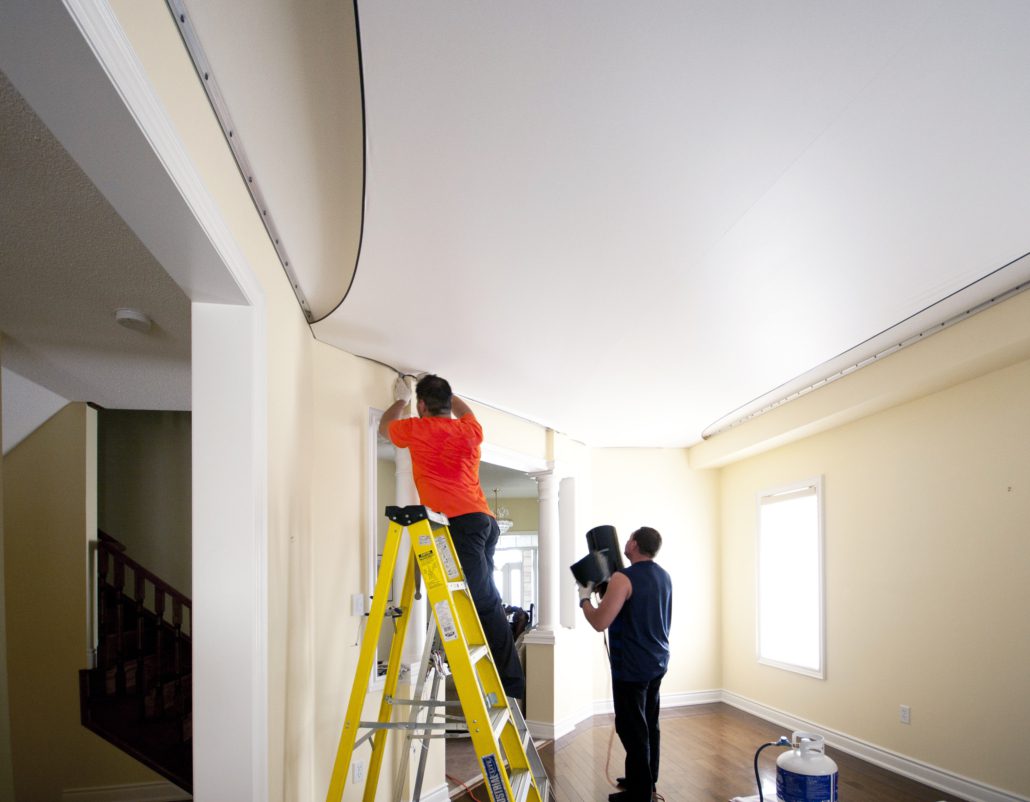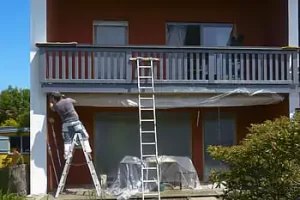Regardless of your liking to DIY home projects or painting in general, nobody is a huge fan of painting their ceiling. For one, the process can be excruciating for your back, can tire out your limbs, and be a literal pain in the neck.
However, residential painting particularly in the kitchen and bathroom, where moisture can easily lay its ground, painting the ceiling is crucial for redecorating all rooms.
Below we present to you just a bunch of tips to fortify your knowledge of what to do when the time to paint the ceiling is near.
Table of Contents
ToggleChoose an Appropriate Colour
The majority of people decide to go for white ceilings. Yet the unique features of your room might make several other colours a better choice. For instance, when you’re looking to make a room with high ceilings feel a bit cozier, consider painting the ceiling in a richer, darker colour.
Big, spacious rooms can allow you to exercise your creative genius and explore a different shade for your wall paint.
Use a Platform
To help alleviate some of the strain on your hands and arms, back and neck, consider employing a work platform. Platforms may assist you to be closer to the ceiling and can make the painting job much easier. Ladders are also an ideal choice, though you’ll have to climb up and down from them continually. Extension poles offer great help, but they place you at a far distance from the surface you’re painting and require a bit of extra muscle and strength. You could still need some additional extension, even when you have a work platform.
Make the Necessary Preparations
Make it a rule of thumb to always paint your ceiling before getting to your walls. Ceiling paint can drip on walls, and you should avoid that from happening after you’ve painted your walls. However, there are other perks too. Contrary to when you paint the walls, painting the ceiling necessitates everything in the room to be covered for protection against splatter and drips. Therefore, starting with the ceiling can protect your space during the entire paint job.
Suppose you’re painting the ceiling alone; you can tape off the walls’ tops to protect them from any damage. Apply some primer. This step is incredibly important on the ceiling as it’s more prone to absorbing moisture coming down from the floors and the attic above.
A Cut-Line
Rollers can’t reach into the close corners between the walls and ceilings, and you’ll have to ‘cut in’ the edges of the ceiling with a brush and paint. However, ordinary brushes won’t do. Take a trim brush of about 2.5 inches in width with bristles tapered to one end. Even when you have taped the walls, a clean-cut line requires precision.
Roll On Your Paint
You may use a low-nap roller if your ceiling doesn’t have much texture. If you’ve finished the ceiling with stucco, use a ½” to ¾” nap roller based on the stucco depth.
Pour some paint into the roller tray right up to where the ‘washboard’ part begins to slope away from the paint pool. This step helps avoid submerging the roller directly into the paint. Other than putting too much paint on the roller, it also puts paint on the ends of it, where it can easily drip on your walls.
With the tray’s washboard section, try getting a consistent amount of paint on the entire roller. According to your reach and proximity to the ceiling, paint in sections of three or four feet square. Roll backward and forward in straight lines, overlapping the lines, and distributing the paint evenly in every section you paint.
You must roll the paint gently. Because the faster you roll, the more splatter there’ll be. When you’re done with a section, move on to another area beside it and overlap the previous one.
Consider the possibility of a Second Coat
Following the first coat’s drying, examine it carefully for any issues, such as a dried paint drop, or if you’ve missed any spots. If not, you’re all done! But if you need a second coat, you can simply repeat the last step.




